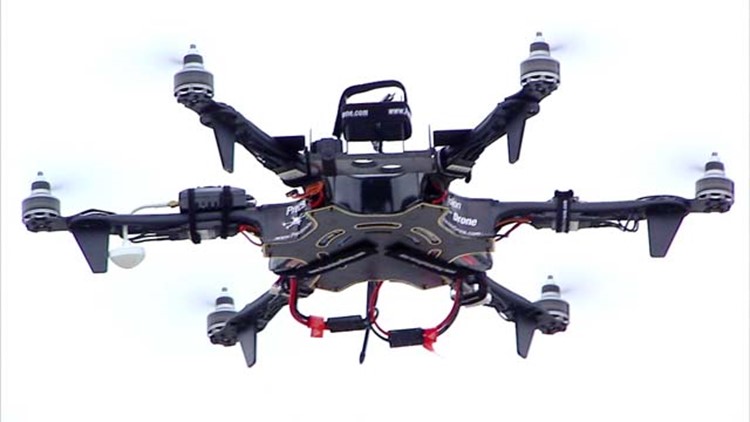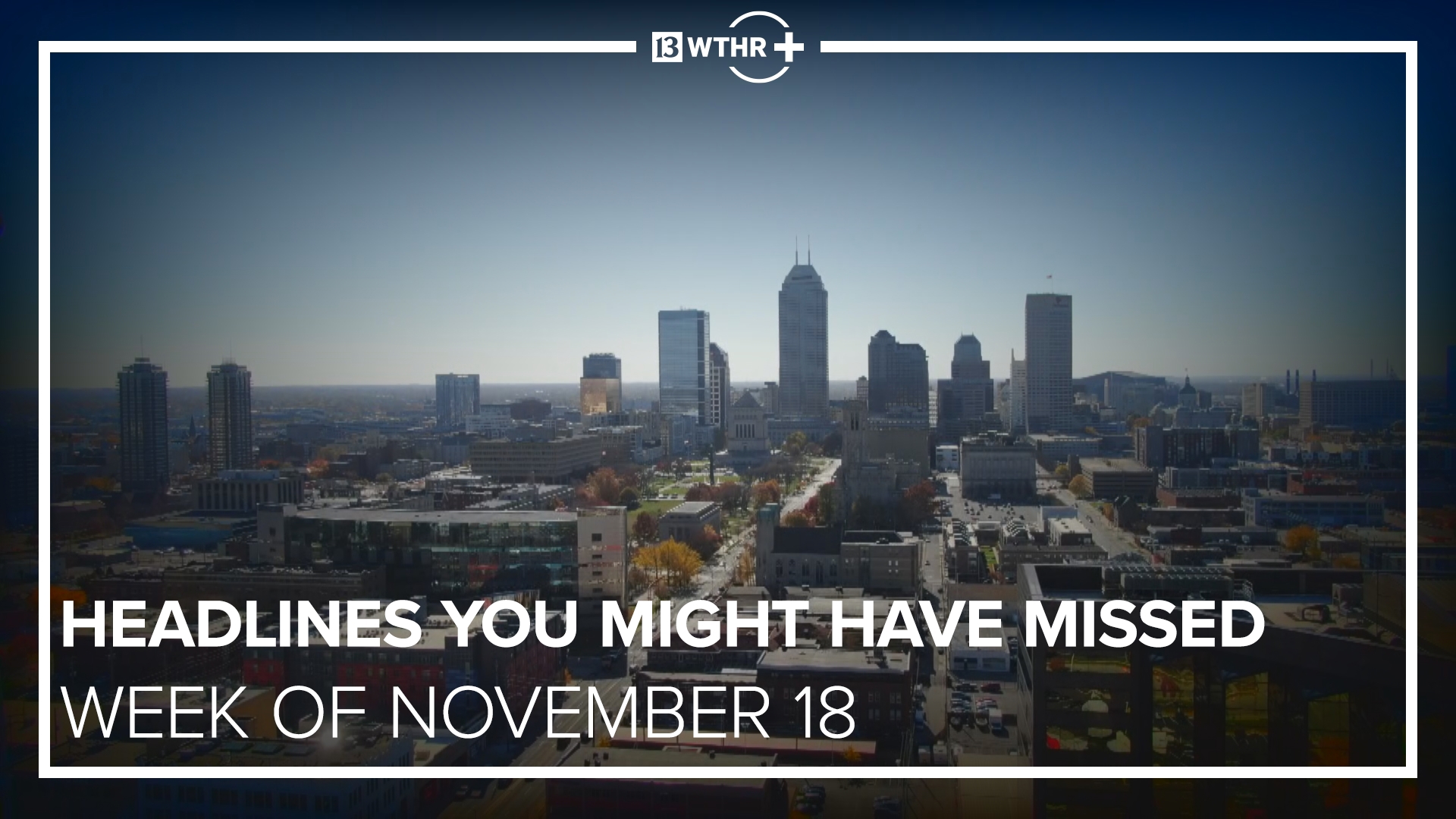It was a dangerous weekend of close calls between passenger planes and drones. The FAA is investigating incidents near LAX, Atlanta, Chicago and Dallas airports. Pilots encountered the unmanned aircraft, flying thousands of feet in the air, well above the FAA's 400-foot limit for drones.
Eyewitness News obtained almost a year's worth of FAA drone incidents - one occurred over Indiana. Along with these drone encounters, we found Indiana businesses and college students counting on drones to be legally flying into our everyday lives.
Unmanned remote controlled aircraft, drones of all shapes and sizes, are everywhere. They are surveying Indiana farm fields. Cruising the canyons of New York City and too often flying illegally and recklessly, endangering people and aircraft.
In the first 10 months of 2014, the FAA received almost 200 complaints. Most came from concerned pilots. One occurred in Indiana, near the Ft. Wayne airport. Last July, a pilot spotted the drone while flying at 6,000 feet and it was close!
He reported to the FAA an unmanned aircraft system - a "UAS passed 40 feet below, 150 feet to his lateral." The pilot did not take evasive action or call police, but the drone was way above where it's legal to fly.
Over New York City, a police helicopter pilot saw one "going up the streets...between buildings."
Two pilots approaching California's LAX spotted, according to his report, "what appeared to be a trash can-sized unmanned aerial vehicle...at 6,500 feet."
At Washington DC's Dulles Airport, a reported "near mid-air collision with a drone." The pilot said his "aircraft came within 50 feet" of the drone.
Without special permission, current FAA regulations forbid the commercial use of drones. They must be flown for personal enjoyment, under 400 feet, away from airports, and kept within sight.
The president didn't like one crashing on his front lawn. President Barack Obama told CNN, "I've asked the FAA and a number of agencies to examine how they are managing this new technology."
So far, not so well. The technology, businesses, even universities, are all racing ahead of the federal bureaucracy.
Indiana State University students aren't playing games as they work in front of flight simulators and fly palm-sized toy drones around the classroom. They are learning to pilot drones. When Tim Hagan's mom found out, "she's bragging I'm in college," he said with a big grin.
Laughing aside, this is serious stuff. ISU is expanding its
, one of the few in the country. Soon, students may be able to earn a degree in the operation of remote-controlled vehicles. They are betting their futures on jobs that don't yet exist and are technically illegal.
Leah Kauffman was trying to keep the aircraft on her computer screen from crashing, "I think it will be a lot bigger when the FAA comes up with regulations."
Entrepreneurs aren't waiting on the FAA, either.
Aaron Sheller is a Hamilton County farmer and owner of
.
"I am like a kid in a candy store right now, this is my passion," he said with a big smile. "The joke in our building is, "If Aaron can run it, anyone can run it."
The Sheller family is building a new generation of flying farmers, whose fingers send drones buzzing over fields and inspecting crops. Aaron Sheller and his partners started the company in the loft of their Hamilton County pole barn.
"They are taking off, figuratively, they really are," he said.
In countries that allow them and even in the United States, where customers are flying on the edge of the law.
"I say, give me direction," Sheller said. "That's all I need. Tell me what we can and can't do."
Without answers, new rules or adequate enforcement of existing rules, too many drones are flying wild. There is a YouTube video of one buzzing over crowed Times Square, smacking into a building and crashing to the sidewalk.
Another drone is seen speeding 45 miles an hour over a rural neighborhood after a school bus until it hits a utility pole and wipes out.
Sheller has heard of the incidents.
"Most of them leave you in awe that people would operate in that type of environment, period," he said
His most popular product costs $19,000. The price tag includes sophisticated software, cameras, satellite navigation systems, and flight training. The aircraft, according to Sheller, gives farmers the opportunity to quickly inspect their fields, see problems, estimate crop sizes and make critical business decisions.
The potential of drones is so great; many see their use as unstoppable and inevitable.
Dakota Clark, another ISU student, sees a huge future.
"With the right people in the pilot's seat, they could very easily change the world," Clark said.
But for now, drones are flying in a world of controversy and uncertainty.
The FAA has been
for more than five years. A spokesperson says "our goal is to get it right."
In the meantime, at least one company is working to keep drones out of trouble. The Chinese company whose drone crashed at the White House has a software update that prevents its products from flying over Washington D.C.




